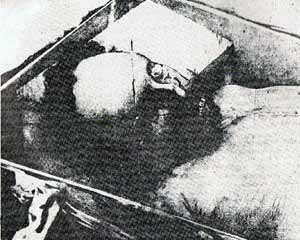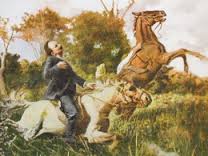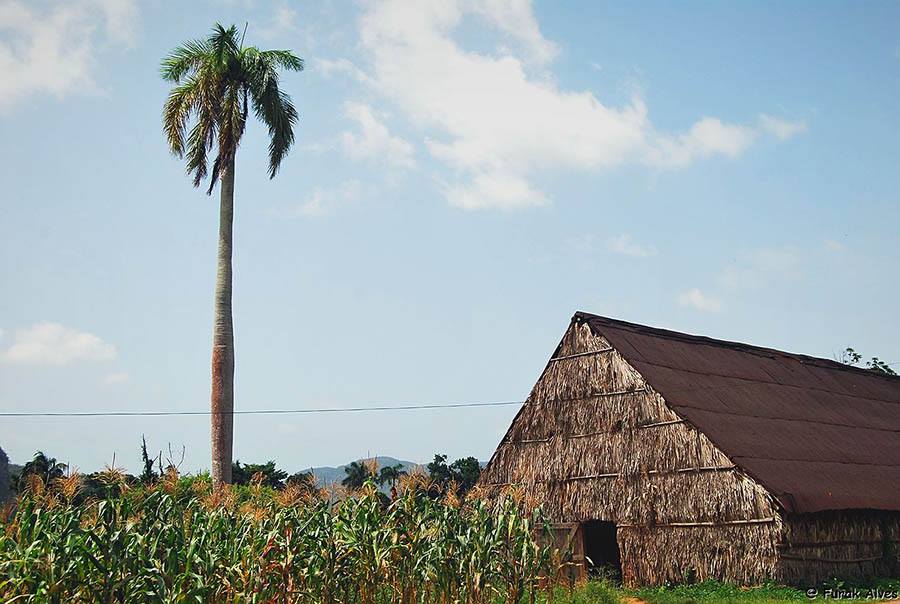MUERTE DE JOSÉ MARTÍ: HECHOS Y DOCUMENTOS.
El análisis médico-histórico del doctor Soto sobre el fallecimiento de Martí parte de “los originales de la autopsia, accesibles por Internet”, que se guardan “tras las celosías del Archivo Nacional de Cuba”. Aparte de que no hubo autopsia, sino apenas reconocimiento forense del cadáver el 23 de mayo de 1895, el acta original, fechada el 27 de mayo por el médico militar español Pablo Valencia Forns, se atesora en el Archivo Central del Instituto de Historia Cultural y Militar de España.

Foto del cadáver de Martí, presuntamente tomada el 9 de junio de 1895, cuando fue exhumado por las autoridades españolas para fines de identificación.
Allí la consultó el historiador Rolando Rodríguez García para incluirla en su libro Dos Ríos: a caballo y con el sol en la frente (La Habana: Ciencias Sociales, 2001), el único registrado bajo el epígrafe “Muerte y entierro de Martí” en la Biblioteca del Congreso de EE. UU. (Clasificación F1783 M38R5772001).
Los disparos
Al confrontarla con la versión más difundida, desde el 1 de junio de 1895 por el diario La Discusión, Rodríguez García advirtió que Valencia Forns ubicó la herida de bala en el tercio inferior del muslo derecho hacia su parte prostera (del griego prosthe, delantera o externa) y no interna, como aparentemente leyó en “los originales” el doctor Soto, quien por ello refiere “la entrada del proyectil por el lado interno del muslo derecho” para determinar “una trayectoria balística”.
El artículo también afirma que el “segundo disparo, posiblemente de otro tirador, penetra el muslo derecho que queda expuesto y levantado por las fuerzas de tracción y gravedad”. Sin embargo, en ocasión del centenario de la tragedia, el doctor Antonio Cobo Abreu publicó sus Consideraciones médico-legales sobre la muerte de Martí (Santiago de Cuba: Editorial Oriente, 1895), entre ellas que Martí recibió el primer disparo en el tórax, el segundo en el cuello -con la cabeza híper extendida por efecto del impacto anterior- y el tercero mientras caía, al cruzar la pierna derecha por encima del caballo.
Valencia Forns indicó, por ejemplo, que el balazo en el pecho salió por “el cuarto espacio intercostal derecho”. Y este apareció intacto en 1907, al contrario de la escápula izquierda. Sin advertir un error tan significativo, el Dr. Soto considera el texto de Valencia Forns como “detallado sobre las trayectorias balísticas.”

El cuadro terminado hacia 1917 por Valderrama fue destruido por su autor debido a las críticas recibidas sobre la inexactitud histórica de la pintura.
Análisis médico-histórico
En junio de 1968, el mensuario Patria, que todavía era la publicación oficial de la Asociación de Antiguos Alumnos del Seminario Martiano, reportó cómo el catedrático de Medicina Legal Francisco Lancís Sánchez había demostrado en la Fragua Martiana, con perfiles a tamaño natural del jinete y su potro, que Martí recibió el balazo mortal en el pecho, mientras cabalgaba.
A su vez el historiador Pedro Carrillo había sentado que el práctico cubano Antonio Oliva se atribuyó la muerte de Martí, pero jamás haberlo rematado en el suelo, como dijo el cabo español Juan Trujillo (La Discusión, mayo 23 de 1899) y repitieron desde Ezequiel Martínez Estrada hasta Guillermo Cabrera Infante.
Imprecisiones y desmentidos
Hay varias imprecisiones en la narrativa del artículo de El Nuevo Herald. Según el doctor Soto, “Martí fue emboscado [y] cabalgaba al frente de la tropa (…) seguido de cerca por otros”. Entre otras muchas fuentes, los jefes de ambos bandos en la escaramuza de Dos Ríos desmienten tales circunstancias.
El jefe español, José Ximénez de Sandoval, aclaró en carta a Gonzalo de Quesada y Aróstegui, fechada en Valencia el 4 de julio de 1908, que “Martí no cayó en una emboscada” (Alrededor de la acción de Dos Ríos, La Habana: Seoane, Fernández y Cía, 1942). Y el jefe mambí, Máximo Gómez, apuntó en su diario: “Cuando Martí cayó, me había abandonado y se encontraba solo, con un niño que jamás se había batido: Miguel (sic) de la Guardia”.
Gómez anotó mal el nombre, pero está bien confirmado por testigos de ambos bandos que Martí, desorientado en medio del combate, era seguido tan sólo por el subteniente Ángel de la Guardia. Esta imagen de soledad y desamparo quedó plasmada en el óleo La muerte del Apóstol (1918), que Esteban Valderrama exhibió en el Salón Nacional de Arte de La Habana, en febrero de 1918, y acabó destrozándolo en reacción emotiva frente a la crítica punzante.
Author: Dr. Miguel Fernández Díaz, Ex profesor de Derecho de la Universidad de La Habana y autor de La muerte indócil de José Martí (2005). 
Agencies/InternetPhotos/Excerpts/various/Arnoldo Varona/TheCubanHistory.com
THE CUBAN HISTORY, HOLLYWOOD.
DEATH OF JOSÉ MARTÍ OF FACTS AND DOCUMENTS.
The historical medical analysis of Dr. Soto on the death of Martí part of ” the original autopsy , accessible by Internet ,” which are saved ” after the lattice of the National Archives of Cuba .” Besides there was no autopsy , but only coroner corpse May 23, 1895 recognition , the original act, dated 27 May by the Spanish military doctor Paul Valencia Forns , is treasured in the Central Archive of the Institute of Cultural History and military in Spain.

Martí corpse photo allegedly taken on June 9, 1895 , when it was exhumed by the Spanish authorities for identification purposes.
There the historian consulted Rolando Rodríguez García for inclusion in his book Two Rivers : a horse and with the sun in the front (Havana : Social Sciences, 2001 ), the only recognized under “Death and burial Martí ” on U.S. library of Congress . UU . (Classification M38R5772001 F1783 ) .
Shots
When confronted with the most widespread version , since June 1, 1895 by La Discussion, García Rodríguez warned that Valencia started Forns bullet wound in the lower third of the right thigh to his prostera part (Greek prosthe , front or external) and not internal , as apparently read the “original ” Dr. Soto , who therefore referred to ” the entry of the projectile on the inside of the right thigh ” to determine ” a ballistic trajectory .”
The article also states that the ” second shot , possibly from another shooter , penetrates the right thigh is exposed and lifted by the tensile forces and gravity.” However, on the occasion of the centenary of the tragedy , Dr. Antonio Abreu Cobo published medical legal considerations Martí ‘s death ( Santiago de Cuba : Editorial Oriente, 1895) , including Marti received the first shot in the chest, the second neck hyper – extended head impact effect above and the third as he fell , crossing the right leg over the horse.
Valencia Forns said , for example, that the bullet in the chest left by ” the right fourth intercostal space.” And this appeared intact in 1907 , contrary to the left scapula . Unaware as significant error , Dr. Soto believes Valencia Forns text as ” detailed ballistic trajectories. ”

The paint was completed around 1917 but was destroyed by the author due to the criticism about the historical inaccuracy of the painting.
Historical medical Analysis
In June 1968, the monthly newspaper Patria , which was still the official publication of the Association of Alumni Seminar Marti reported how the Professor of Legal Medicine Lancis Francisco Sánchez had shown in the monument to Marti , with life-size profiles and Rider her foal , which Martí received the fatal shot in the chest while riding .
In turn, the historian Pedro Carrillo had assumed that the Cuban practical Antonio Oliva Marti’s death was attributed , but never having finished in the ground, as the Spanish out Juan Trujillo ( The Talk , May 23, 1899 ) said and repeated from Ezekiel Martínez Estrada to Guillermo Cabrera Infante.
Inaccuracies and denials
There are several inaccuracies in the narrative of the article in El Nuevo Herald. According to Dr. Soto, ” Martí was ambushed [ and ] rode at the head of the troops ( … ) closely followed by others.” Among other sources , the leaders of both sides in the skirmish at Two Rivers belie such circumstances.
The Spanish leader Jose Ximenez de Sandoval, said in a letter to Gonzalo de Quesada and Aróstegui , Valencia dated July 4 , 1908, that ” no Martí ambushed ” (about the action of Two Rivers , La Habana: Seoane Fernández and Co. , 1942). And mambí chief, Maximo Gomez , noted in his diary : ” When Marti fell , had left me and was alone with a child who had never beaten : Miguel (sic ) of the Guard.”
Gomez scored the wrong name , but it is well confirmed by witnesses on both sides who Martí , clueless in combat , was followed only by the Angel Guard lieutenant . This image of loneliness and helplessness was reflected in the oil Death of the Apostle (1918 ) , Esteban Valderrama exhibited at the National Exhibition of Art in Havana , in February 1918 , and ended up destroying it in emotional reaction to stinging criticism .
Author: Dr. Miguel Fernandez Diaz , Former Professor of Law at the University of Havana and author of unruly death of José Martí ( 2005). 
Agencies/InternetPhotos/Excerpts/various/Arnoldo Varona/TheCubanHistory.com
THE CUBAN HISTORY, HOLLYWOOD.





